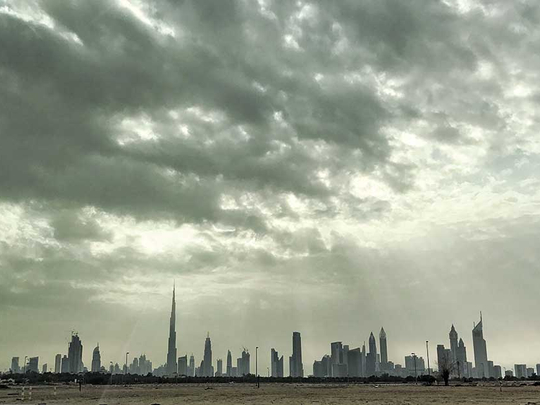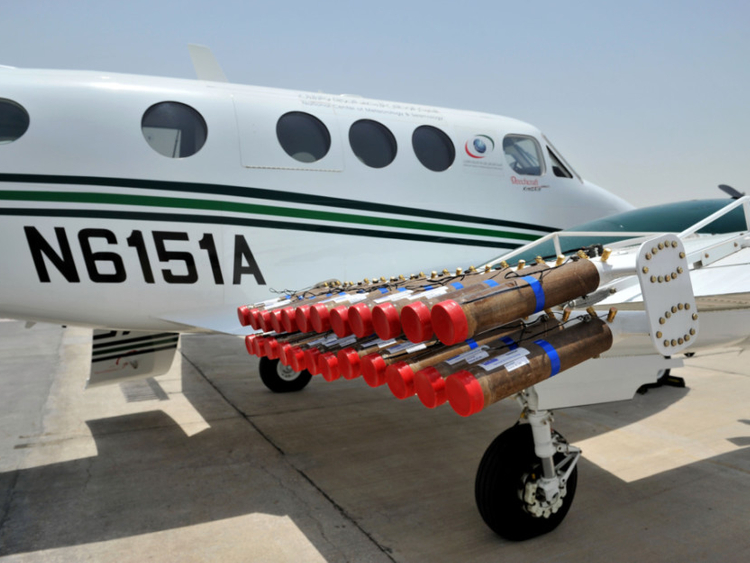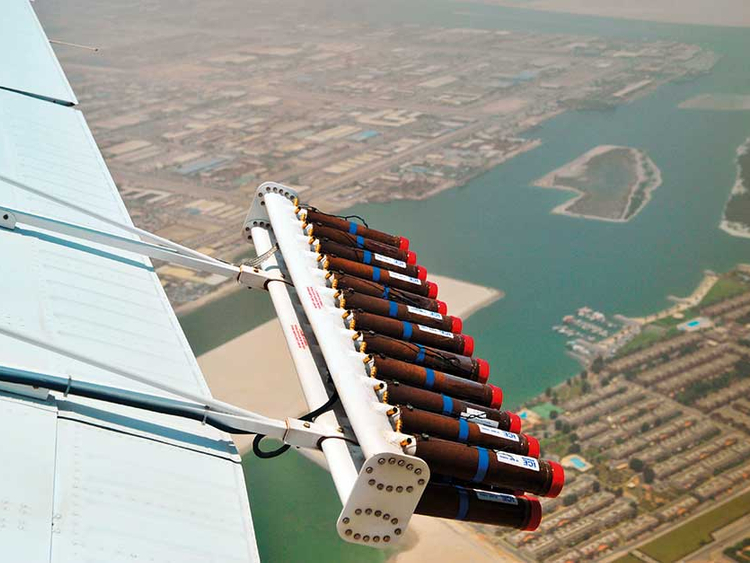
Dubai: After five days of rain, the National Centre for Meteorology and Seismology (NCMS) — managers of the annual cloud-seeding programme — said the amount of rainfall actually enhanced by human technology is likely not more than 30 per cent of naturally-occurring precipitation.
While many residents may believe that the rain-making programme is causing most of the rain to fall in a usually dry, dune-dusted desert, one NCMS official told Gulf News that cloud-seeding success rates globally hover between 15-30 per cent — and no more.
Rain the UAE: When will it stop?
“There is no particular percentage of cloud seeding success; it depends on the size and intensity of the cloud. Throughout the previous studies, it was showing out the success of rainfall enhancement is on order 10 to 15 percent in turbid atmosphere, while it is in order of 25 to 30 per cent (in non-turbid conditions),” he said on Monday.
Turbidity is the cloudiness or haziness of a fluid caused by large numbers of individual particles generally invisible to the naked eye, similar to smoke in air. The measurement of turbidity is a key test of water quality.
Climate change will hit UAE sectors, says report
So far this year, the weather bureau has scrambled 100 cloud-seeding missions into UAE airspace using its six dedicated light twin-propeller aircraft equipped with dozens of salt-dispensing flares.
When a plane enters a cloud that appears to be promising, salt crystal flares are fired into naturally occuring overcast skies to encourage the formation and release of cloud moisture into raindrops.
“The rainfall patterns in UAE highly fluctuate from one year to another and from one season to another. Usually, the unstable weather condition is mostly frequent during the first transitional period. This transitional period is well known between winter and summer seasons precisely starts on the 21st of March,” said the official.
“The country during the last few days, has witnessed unstable weather conditions at which rainy clouds had been covered and developed from one time to another accompanied with different intensity of rainfall and embedded with thunder activity at times. The highest accumulated rainfall amount till 3pm on March 26 is 193mm,” he said.
He pointed out that cloud-seeding missions can only be carried out when there are cloud formations over the UAE as picked up by sophisticated radar.
“We do seeding when there are clouds. So, the NCMS cloud seeding planes target certain clouds during weather conditions,” he said.
To further more scientific knowledge about cloud seeding, the weather centre launched a rain-research programme in 2014 offering $5 million (Dh18 million) in grants to help researchers find new ways of rain ehancement to help arid countries replenish ground aquifers.
Alya Al Mazroui, manager of the UAE Research Programme for Rain Enhancement Science, told Gulf News in an interview late last year that for countries experiencing depleted underground natural aquifers, natural rainfall is the best way to replenish wells and standing sources of water.
Data gleaned from scientists and researchers who are selected for the programme’s $5 million annual award is aimed at helping “solve global water challenges” by sharing it with other countries, she said.
















